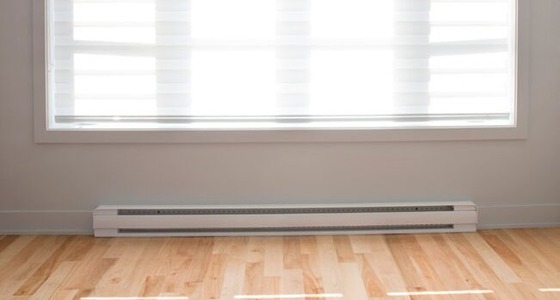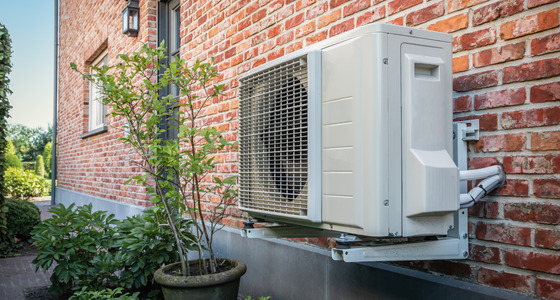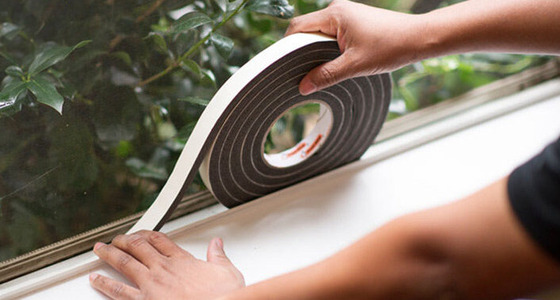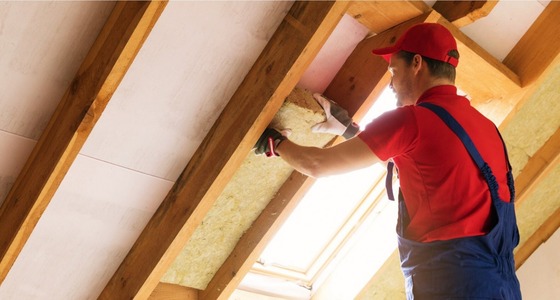How to use baseboard heaters efficiently
If you rely mostly on electric baseboard heaters to heat your home, they probably make up a big part of your annual electricity bill – sometimes as much as 44%.
However, there are plenty of ways to maximize the efficiency of your baseboard heaters to cut down your winter heating costs.
On this page:
Tips for electric baseboard heaters
We've got seven tips to help keep your energy costs down when using baseboard heaters.
1. Select the right temperature
Did you know that heating costs can increase by about 5% for every degree above 20°C (68°F)? Most people often set their thermostat higher than it needs to be.
With baseboard heaters, one of the best ways to keep heating costs down is to adjust your thermostat throughout the day to the ideal temperature based on activity.
Home temperature reference guide
- Going to sleep? Set your thermostat to 16ºC as you turn in for the night.
- Doing housework or cooking? Set your thermostat to 18ºC to keep you comfortable.
- Reading or watching TV: Set your thermostat to 21ºC for energy-efficient relaxation.
Let programmable thermostats do the work
A programmable thermostat is a small investment that allows you to set it and forget it. Simply program it to adjust throughout the day according to your pre-set schedule for optimal efficiency, such as to warm up at 5 p.m. when you're on your way home, and to cool down at 11 p.m. when you’re going to sleep.
Wi-fi-enabled smart thermostats can do that and more, giving you more flexibility to adjust settings on the fly, and to learn your behaviours automatically. They both help you manage heating costs by reducing wasted heat.
2. Be patient
Cranking the thermostat doesn't warm up the room any faster. If you've ever returned home to a room that feels like the Arctic, it's pretty tempting to crank the thermostat up four or five degrees past where you normally set it. But it will still take the same length of time to warm up and you'll just use more energy because it keeps heating the room after you've passed your regular comfortable temperature.
3. Heat in zones
Baseboard heaters do a great job of heating in "zones" – that is, heating the spaces that you need, compared to heating your entire home all the time. This is because they don't have a forced air or fan system. To avoid wasted heat (and higher electricity costs), only turn on baseboard heaters in rooms that are occupied. Close doors to bedrooms and offices when baseboard heaters are turned on to keep the heat in.
4. Keep them clean
Dust and dirt on baseboard heaters can prevent the warm air from circulating properly, meaning they have to work harder and use more energy to maintain the room temperature. At least once a year (ideally in the fall), wipe down the surface of the heater and vacuum the fins to remove as much dust as possible.
5. Maximize air flow
Window coverings and heavy furniture can also prevent heat from circulating effectively. Drapes should end at least 10 centimetres above the heater, and heaters should sit at least two centimetres above the carpet to allow the cooler air on the floor to flow under and through the electrical element. Move furniture away from heaters to prevent it from blocking the heat.
6. Reduce window drafts
Unless you have high-efficiency windows, the space near windows is typically the coldest place in a room during the winter months. This is because cold air can leak through and create unpleasant drafts. The heat from a baseboard heater under a window will rise and help to offset that cool air, the more cold air that comes in, the harder a heater has to work. This can lead to higher energy costs. Reducing drafts from your windows with window film and draftproofing and using window coverings such as blinds and curtains can help.
Smart thermostats and baseboard heaters
Can smart thermostats be used for baseboard heaters?
Yes! Up until recently, most smart thermostats used 24 volts, whereas baseboard heaters use between 120 to 240 volts. If you connected a regular smart thermostat to your baseboard system, it’d be toast. But now there are now line-voltage smart thermostats available in the market, which are designed to work with baseboard heaters.
Maintain your heating system
Depending on the state of your heating system, keeping it well maintained can reduce energy waste and lower your bill. Doing so will also help your system to not have to work so hard, which can help it last longer and avoid the cost of new equipment.
How to patch leaks in a heating system
- Check your heating system for visible leaks and loose joints. Common leakage sites include:
- Space around air registers and grilles
- Duct connections
- Floor joists
- Heating unit
- Clean the surface of the leaks, and seal them with duct mastic or foil tape.
- Once ducts are sealed, insulate them. Install insulation with the vinyl or foil backing facing outward.



